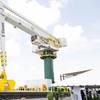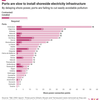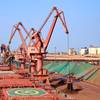China has been pressing ahead with its ‘One Belt, One Road’ (OBOR) initiative – comprised of the Silk Road Economic Belt and the 21st-century Maritime Silk Road (pictured) – which was launched in 2015. Alibra Shipping Research is taking a look on China's plans.
The ambitious scheme will build pipelines, ports and roads in areas home to about 65% of the world’s population and will affect about 25% of all the goods and services the world moves.
The OBOR initiative aims to generate foreign demand to keep China’s excess steel mills, cement plants and construction companies in business, and therefore preserve jobs at home.
The hope is that China’s second wave of infrastructural built-out – this time, outside of its own borders – will lead to another wave of high Chinese exports and imports of raw materials. The importance of this is highlighted by China's weak trade data for July, which saw lower-than-expected export and import growth at -4.4% and -12.5% respectively.
But is it realistic to expect that demand generated by China’s OBOR projects will absorb its excess industrial capacity?
In the case of steel production, China’s mills can currently turn out some 1.1bn tonnes of steel per annum.
Yet even with economic stimulus from the government, domestic demand is unlikely to exceed 700m tonnes this year. That means China must build enough roads, ports and pipelines across Asia to use up the extra 300m tonnes of steel capacity.
This seems unlikely, considering the World Steel Association forecasts steel demand in the European Union, the world’s largest economy, to be just 150m tonnes in 2016.
Investment has so far been free-flowing. New financing institutions have been established, but the combined funds are still small compared to the $2tr to $3tr that needs to be financed per year.
This means China simply cannot afford to rush into infrastructural projects, create ‘white elephants’ and waste money – the businesses have got to be economically viable.
To achieve this, China needs to engage local workers and institutions in order to run its new port and railway businesses efficiently.
The fact that China has so much excess industrial capacity and so many bankrupt facilities (we’re thinking shipyards!) may suggest that running its new businesses efficiently will be crucial if OBOR is to be a success.












